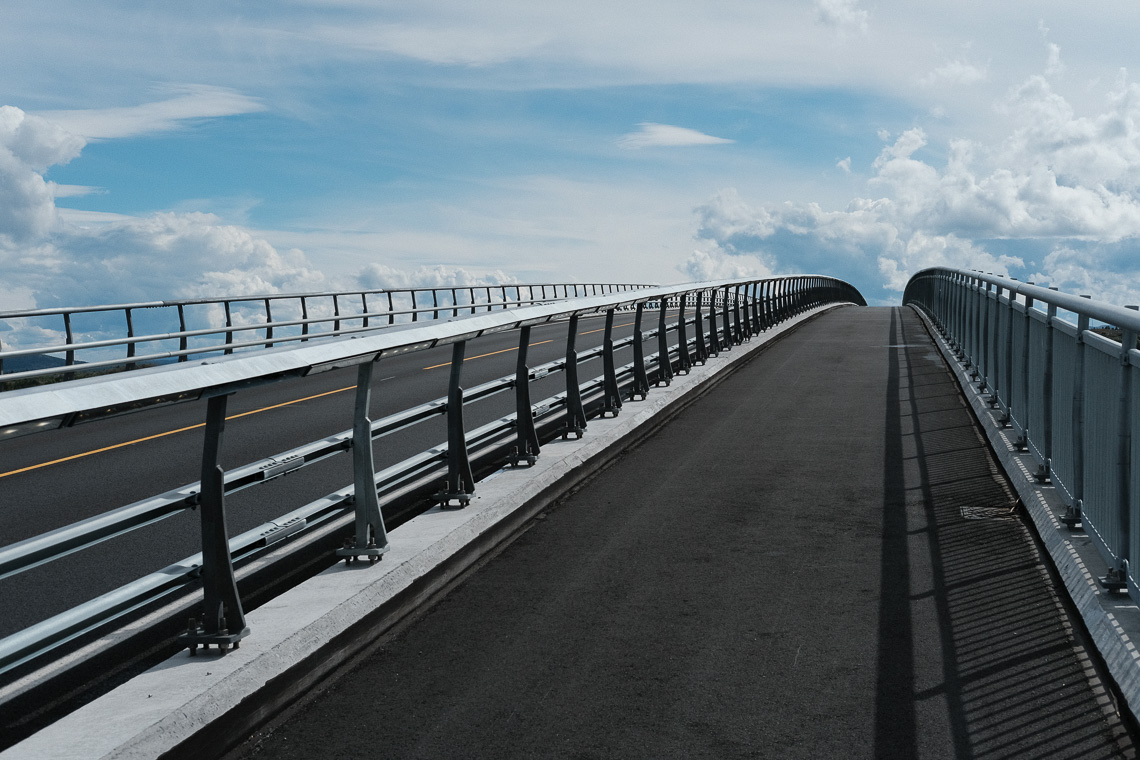I started my journey with many Fujifilm cameras and lenses with the X-Pro1 when it was released. I was one of the first owners of the X-Pro1 after it was launched in Norway, and I used the camera for quite a while on firmware version 1.00. My experience with the X-Pro1 was really good, it kickstarted my interested in rangefinders and more compact cameras and lenses for my every-day use. The X-Pro1 is the main reason and inspiration to get into Leica cameras and lenses also. Why? Well, simply put; The X-Pro1 was the first camera I’ve used that really inspired me and motivated me to go out and make images in a different way than my DSLR’s ever did.
The DSLR’s always made me feel a bit uncomfortable — they made me feel like a professional event photographer that was roaming around the streets and neighbourhoods. I never felt it was OK to just use my DSLR to capture mundane every-day subjects and scenes. The X-Pro1 changed all of that. With the X-Pro1 in my hand I always felt a lot more comfortable by walking around making pictures of every-day life. I didn’t feel like a professional any more. There was a lot less pressure to perform and behave like a “pro”. And ever since I’ve stayed with more or less the same form factor as the X-Pro1.

The X-Pro1 is one of the few digital cameras that stuck around for a very long time. It took four years for Fujifilm to release a successor to the X-Pro1. Digital cameras are usually updated every 1 1/2 to 2 years, and some times up to every 3 years. By the time the X-Pro2 launched, the X-Pro1 was starting to become very old and outdated by today’s standards. Not that it performed worse than it did when I got it; The X-Pro1 performed really bad on firmware 1.00. You’ll know what I’m talking about if you ever used it on v1.00 yourself.

The X-Pro2 is in a completely different league than the X-Pro1. Everything is updated significantly, and everything that was great about the form-factor and usability of the X-Pro1 was kept intact and improved greatly in every possible way.

The number one thing about the X-Pro2 that I love is of course the viewfinder. I simply love optical viewfinders. Yes, I know there are many advantages to EVF’s: accurate metering, what you see is what you get, previewing film profiles, and generally being able to set the mood of the photograph through the viewfinder (high or lo key) are great advantages. And on top of that being able to “see in the dark” are all great advantages to electronic viewfinders. But there’s just something about shooting with an optical viewfinder that I prefer. Especially when I can see outside of my frame-lines. The difference in use between an EVF and an OVF is huge for me. The OVF is like seeing the world through a window and everything is in focus, while the EVF is like having tunnel-vision. I feel like I potentially miss a lot of my creative framing capabilities whenever I use an EVF (or an SLR for that matter). Like a true rangefinder, the OVF of the X-Pro2 offers the user the capability of seeing outside of the frame. I personally believe that this is a great creative advantage for framing images.

The great thing about the X-Pro2 is the fact that it has a hybrid viewfinder which offers the best of both worlds: an OVF where you can see outside the frame-lines, and an EVF which gives you 100% accurate framing, and the ability to preview your exposure, colors, and other stylistic choices.
Granted, the EVF of the X-Pro2 isn’t the best, but at least you have a choice that very few other cameras have (The X-Pro and the X100 series cameras, basically). The only things I wish were improved is the eye-relief and the use of an OLED panel instead of an LCD panel for the EVF.

The eye-relief makes it difficult for people using glasses to be able to see the entire image in the viewfinder, regardless if you’re using the OVF or the EVF. And since the EVF uses an LCD panel you can forget about using this camera with polarized sunglasses. In both these points the X-T2 is far superior, the eye-relief is significantly better, and people with glasses should have no problems seeing the entire image in the viewfinder. The X-T2 also uses an OLED panel for it’s EVF which means that you can use it with polarized sunglasses.
The eye-relief and EVF panel is what I hope will be improved on the X-Pro3. As a glasses wearer, I find the eye-relief very lacking on the X-Pro2, which is why I actually decided to sell my X-Pro2 and purchase an X-T2 instead. My heart is with the X-Pro2 but the usability of the X-T2 with it’s much better eye-relief made a huge difference for me as a glasses wearer.

The rest of the X-Pro2 is simply perfect. Well, almost. Let’s talk about the ISO-dial. Or let’s not, because it’s a really good idea that’s been poorly executed for people that shoot in manual mode. The ISO dial rotates with the shutter speed dial, and that’s the main issue. It’s not always easy to set the ISO when the dial and those extremely small numbers are upside down in a badly lit environment!

Personally, I always use my Fuji cameras in Auto-ISO mode. The Auto-ISO implementation on the recent Fuji cameras are so good that I see no reason not to use it. I usually set my Auto-ISO presets to ISO 200-12800, and use three different shutter speeds to differentiate between them: Low shutter speed (1/30), medium shutter speed (1/125), and high shutter speed (1/320). If I need to use higher or lower shutter speeds I just set my shutter speed manually and let the Auto-ISO do the rest, as auto-iso also works perfectly in manual mode.
And if I need to make exposure adjustments I just use exposure compensation to either dial in the exposure with the EVF or with the histogram, which I always enable, both in EVF and OVF mode.

As for the sensor, it’s fantastic for an APS-C sensor. It’s the same sensor as the X-T2 and X100F, and the X-Pro2 was the first Fuji camera to ship with the latest sensor and processing pipeline. But for some reason the images seems to have lost some of their magic mojo. The files from the X-Trans III sensor is more or less very similar to other modern sensors. Even Fujifilm’s jpeg processing has become a bit more neutral. Velvia isn’t the same any more. It’s still super saturated and contrasty, but not in the same way that the X-Trans II pipeline made it. Depending on your preference you might like it, or you might not. Personally, I don’t care as much, as I’ve never relied on the jpeg processing of my Fuji’s. I’ve always been able to create far better renderings in a very short time in a raw converter any way.

You can now bring the X-Pro2 out in the rain which is very nice, but you should have a WR lens to go with it. That’s what they say anyway… Honestly, there is no such thing as a weather-sealed camera. NO camera is weather-sealed. Ask any camera repair technician and they will probably laugh the moment you mention “weather-sealing”. The cameras might be a little more resistant to accidental moisture and humidity, yes, but they are not ment to be used in a downpour. No camera is, not even the most rugged Canon’s. The simple reason is that the gaskets around the shutter button, for example, works fine as long as the button isn’t pressed. The moment the button is pressed the gasket will flex, which increases the chance of moisture passing the seal dramatically. I would not advise on using the X-Pro2, or any other weather-sealed camera for that matter, in really bad weather and expect everything to be just fine. Chances are your camera is gonna break down right then and there, or, it might break down or develop quirks and issues in a couple of days, weeks or even months after due to internal corrosion.

The camera is very responsive, and the auto-focus is excellent. The write-times are superb, especially if you use a fast UHS-II card and only write to one card. The UHS-II card will also potentially give you 20-30% more battery, as the UHS-II interface is a lot more energy efficient. The auto white-balance is excellent, and overall the camera is just great to use in every way. It looks great, feels great, handles great and shoots great. The battery-life is better but not great, but on par with most other mirrorless cameras these days.

Overall this is the perfect digital camera, in my opinion. If only the eye-relief was better, because the X-Pro2 doesn’t play well with glasses. And this is the one and only reason why I chose to move to an X-T2 instead. If the X-Pro2s or X-Pro3 or whatever it’s gonna be called has noticeably better eyer-relief, I will definitely go back to the X-Pro series again, as I much prefer the form factor and handling ergonomics of the rangefinder-style camera.

If you don’t wear glasses the X-Pro2 is definitely worth checking out! You might just fall in love with the series and the form-factor, just like I did with the X-Pro1.
If you’re considering purchasing a Fujifilm X-Pro2, and you feel that my review helped you make that decision, I would appreciate if you could look at the purchasing options via my Amazon affiliate to support my site:
Purchase Fujifilm X-Pro2
Purchase Fujifilm NP-W126S Battery
Purchase Wasabi Power Battery for X-Pro2 (2-Pack)
Some more sample images:



High-resolution versions of these photographs can be seen in this Flickr album: https://www.flickr.com/gp/borgei/5p3260
© Børge Indergaard 2017. All rights reserved.
1 Comment
Join the discussion and tell us your opinion.
I completely agree with the advantages of how a rangefinder aids composition. To me this advantage of the X-Pro far outweighs any drawbacks like the lower magnification. Preferably I’d have a Leica M10 with its higher magnification and even clearer viewfinder, but the X-Pro 2 is more versatile with its amazing hybrid viewfinder, and I couldn’t afford an M10 so there’s that.
I don’t get the critique of the ISO dial. I really love it. Granted, I’m an old film photographer and I only change ISO if there are significant changes to the light (inside/outside, day/night et c). I prefer the X-Pro 2 to the X-T because I find it easier to change ISO with the camera to the eye, since my left hand always holds the weight of the camera so I don’t have to juggle it between hands like the X-T.